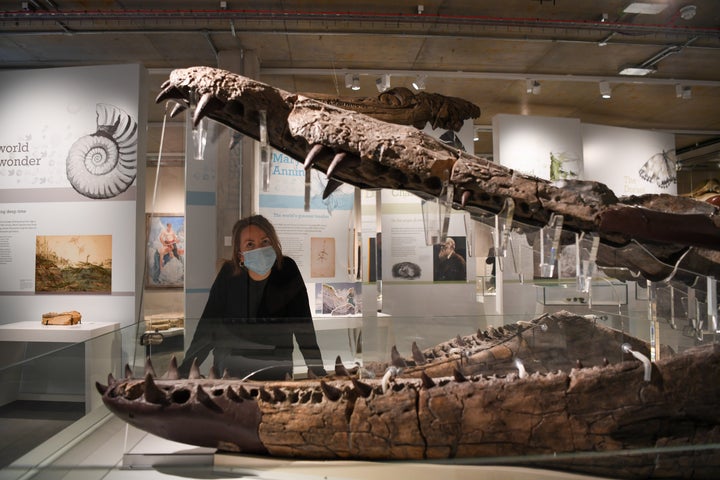A stunning 6-foot-long skull of a 150 million-year-old killer sea creature has been chiseled out from a cliff along southern England’s Jurassic Coast in what scientists are calling a one-of-a-kind find.
The largely intact skull of a pliosaur, a carnivorous marine reptile, was unveiled Sunday by the BBC after it was extracted from the cliff in Dorset using ropes and a makeshift stretcher.
“It’s one of the best fossils I’ve ever worked on. What makes it unique is it’s complete,” local paleontologist Steve Etches, who helped excavate the ancient find, told the BBC News.

The skull, which is larger than the average human’s height, is slightly distorted but, unlike other pliosaur fossils found, it has every bone present, he said.
David Martill, an emeritus professor of paleobiology at the University of Portsmouth in England, who did not participate in the discovery, agreed that it’s a remarkable find ― and one that could shed new light on the creature’s anatomy.
“One, it’s enormous,” he told The New York Times. “It’s also extremely well preserved.”
The monster skull was discovered by chance during a walk on the beach below the cliff by Etches’ friend and fellow fossil enthusiast, Phil Jacobs, the BBC reported.

The beach is part of the so-called Jurassic Coast, which has been recognized as a UNESCO World Heritage Site because of the extraordinary fossils, rocks and landforms found along the 95-mile coastline.
A piece of the skull’s snout had fallen out of the cliff and onto the beach. Jacobs spotted it and contacted Etches, but because the fossil was too heavy to carry on his own, he buried it on the beach until he could return with help, Etches told The Guardian.
“It was very exciting but, thinking logistically, not a good place to collect a fossil from,” Etches said. “The cliffs are sheer, crumbling and unsafe, eroding quickly. It’s a very dangerous area ― with large rockfalls and slippery ledges ― so safety was paramount.”
Using a drone, Etches said he was able to locate an area about 36 feet above the beach where the fossil had fallen. He and others then scaled down to it from the cliff’s top and went to work extracting the entire skull.
Etches told People that he has no doubt that the rest of the reptile’s body is in the cliff but that it will take a lot of work and funding to get the rest of it out.
“I’d love to get it out ― the cliffs are eroding by a few feet every year and I think it’s important to science that we save the whole thing,” he said.
For now, he said he’s grateful to have this impressive find that will go on display in January at the Etches Collection Museum of Jurassic Marine Life in Kimmeridge, Dorset.
The specimen will also be featured in a BBC documentary presented by David Attenborough titled Attenborough and the Giant Sea Monster. It is scheduled to air on BBC One on Jan. 1 and on PBS in the U.S. on Feb. 14.


























